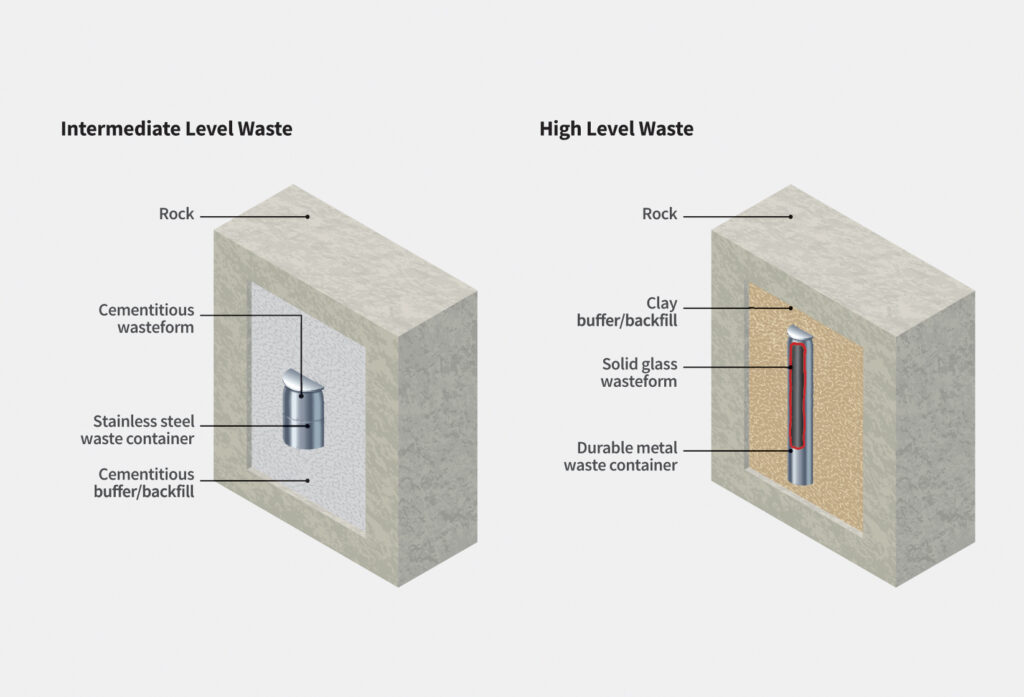A Geological Disposal Facility (GDF) will be a significant piece of UK infrastructure, where the majority of the facility is built between 200 and 1000 metres underground, with a surface area of approximately 1 square kilometre. The type of GDF which would be considered in Theddlethorpe would have inland surface facilities, with the disposal tunnels and vaults far out at sea, under the seabed.
Geological disposal involves putting the waste in purpose built containers which are then placed in tunnels and vaults beneath several hundred metres of solid rock. In the Theddlethorpe area scientists will investigate layers of lower strength sedimentary (clay) rocks deep under the seabed.
A GDF is already the chosen approach in many other countries including Canada (www.nwmo.ca/), Finland (www.posiva.fi/en), France (www.andra.fr), Sweden (www.skb.com/) and Switzerland (www.nagra.ch/en). These countries are well on their way in developing their own GDFs.
Geological disposal is possible thanks to world-class engineering, science and technology. This involves:

The rocks that would be considered to house a Geological Disposal Facility (GDF) have remained deeply buried and stable for millions and millions of years. This means they’ll isolate the waste safely for the shorter time needed for nuclear waste to decay. Scientists believe the combination of natural and engineered barriers will isolate and contain the waste safely, protecting people and the environment for thousands of years.
It’s only natural to have lots of questions and concerns about what a GDF might mean for the Theddlethorpe area. There are different ways to learn more about the project or ask those questions. You can: